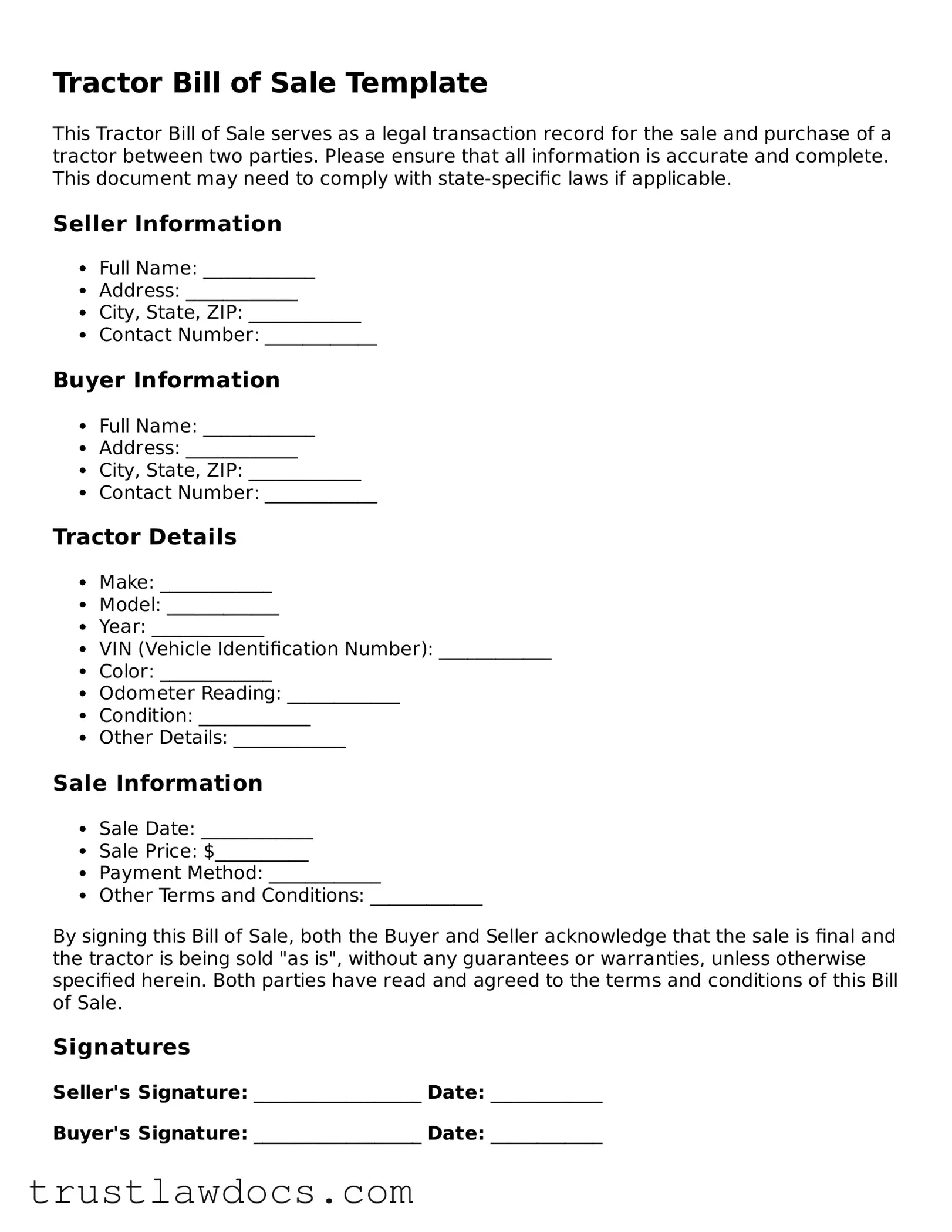The Vehicle Bill of Sale is closely related to the Tractor Bill of Sale as both serve as evidence of a transaction between a buyer and a seller for a motor vehicle. The key similarity lies in their function: to document the sale and transfer of ownership. Detailed in these documents are the make, model, year, and VIN (Vehicle Identification Number), ensuring that the specific vehicle is accurately represented. Additionally, both forms typically require notarization to validate the signatures of the parties involved, adding an extra layer of legal protection.
The Boat Bill of Sale shares a similar role with the Tractor Bill of Sale, despite catering to a different type of property. This document is utilized when buying or selling a boat, recording specifics such as the hull identification number, length, make, and model of the vessel. Just like with tractors and vehicles, this form serves as a legal record of the transaction, establishing the buyer's ownership and outlining the sale's particulars, including any warranty or "as-is" condition agreement.
A Firearm Bill of Sale is another document with similarities to the Tractor Bill of Sale. It is used during the sale of a gun and includes identifying information about the firearm (such as make, model, and serial number), the sale price, and the personal details of both the buyer and seller. It serves an important legal function by explicitly transferring ownership of the firearm from the seller to the buyer, and it often includes declarations about the legal eligibility of the buyer to possess a firearm.
General Bill of Sale forms are akin to the Tractor Bill of Sale in their versatile application across various personal property transactions, not just those confined to specific items like vehicles or boats. These documents cover the sale of goods such as electronics, furniture, or even smaller items like bicycles. They record the transaction details, including the item's description, sale amount, and conditions of sale. Like the Tractor Bill of Sale, they are essential for providing proof of the transfer of ownership and protecting both parties legally.
The Equipment Bill of Sale is particularly similar to the Tractor Bill of Sale when the tractor is considered as equipment for agricultural or construction purposes. This document focuses on the sale of machinery or heavy equipment, detailing the item's condition, serial number, make, model, and any other distinctive characteristics. The primary purpose of both documents is to formalize the transfer of ownership and capture the terms of the sale, providing a legal record for both the buyer and seller.
A Business Bill of Sale compares to the Tractor Bill of Sale as it functions to transfer ownership, but from one entity to another in the context of business assets. This might include assets ranging from vehicles and equipment (like tractors) to intangible assets and operating rights. The document outlines critical details such as the asset description, purchase price, and terms of the sale. It acts as a legal receipt that the buyer can use to prove ownership, much like its counterpart for personal or specific property assets.
